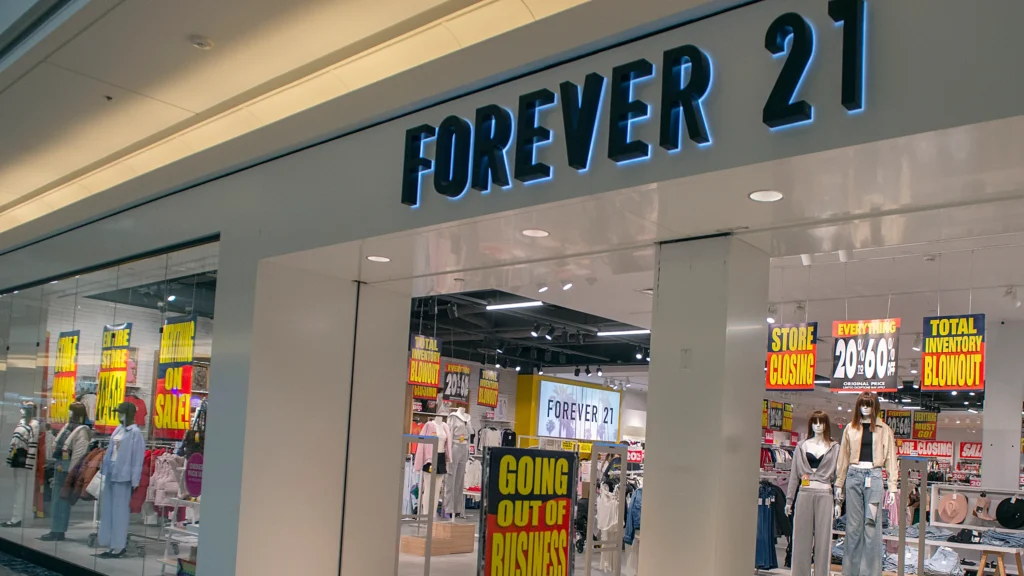
Forever 21 Closing: The Fall of a Fast-Fashion Giant
Introduction
Forever 21, once a dominant force in the fast-fashion industry, has faced significant financial struggles, leading to widespread store closures. Once a go-to brand for affordable and trendy clothing, the retailer has seen a dramatic decline due to various factors, including changing consumer behavior, online competition, and economic challenges.
This article explores the rise and fall of Forever 21, the reasons behind its closures, its impact on the fashion industry, and what the future holds for the brand.
A Brief History of Forever 21
| Detail | Information |
|---|---|
| Founded | 1984 |
| Founders | Do Won Chang, Jin Sook Chang |
| Headquarters | Los Angeles, California, USA |
| Peak Stores | Over 800 locations worldwide |
| Bankruptcy Filing | September 2019 |
Forever 21 was founded in 1984 in Los Angeles by South Korean immigrants Do Won Chang and Jin Sook Chang. It quickly gained popularity for its affordable and trendy apparel, expanding rapidly across the U.S. and internationally. At its peak, the brand had over 800 stores in major markets worldwide.
However, the company’s aggressive expansion strategy, combined with growing challenges in the retail industry, ultimately led to its financial troubles.
Reasons for Forever 21’s Decline and Store Closures
1. The Shift to Online Shopping
The rise of e-commerce giants like Amazon, Shein, and Fashion Nova changed the way consumers shop. Forever 21 struggled to keep up with the digital transformation, leading to declining foot traffic in its physical stores.
2. Overexpansion
Forever 21’s rapid expansion led to an oversaturation of stores. Many locations were underperforming, draining financial resources. Opening large flagship stores in high-rent areas further worsened the company’s financial burden.
3. Changing Consumer Preferences
Modern shoppers have shifted towards sustainable and high-quality fashion. Fast fashion brands like Forever 21 have faced backlash due to environmental concerns and ethical labor practices.
4. Competition from Emerging Brands
Fast fashion brands like Zara and H&M adapted better to consumer demands, while online retailers like Shein outperformed Forever 21 in digital marketing and affordability.
5. Poor Financial Management
Forever 21’s financial struggles culminated in a Chapter 11 bankruptcy filing in 2019. The company owed millions to landlords and suppliers, forcing it to close several stores worldwide.
Impact of Forever 21’s Closures
| Category | Impact |
|---|---|
| Employees | Thousands of job losses |
| Retail Industry | Shift towards online retail |
| Shopping Malls | Decreased foot traffic |
| Fashion Trends | Rise of sustainable fashion |
Forever 21’s closures had a widespread impact. Thousands of employees lost their jobs, malls faced declining foot traffic, and the retail industry continued its shift toward e-commerce. Additionally, the closure of many Forever 21 stores signaled a growing demand for more ethical and sustainable fashion alternatives.
The Future of Forever 21
Despite its bankruptcy, Forever 21 has attempted a revival. In early 2020, the brand was acquired by Authentic Brands Group, Simon Property Group, and Brookfield Property Partners. The new ownership has focused on restructuring, reducing store locations, and strengthening its online presence.
Key Strategies for Revival
- Smaller and More Strategic Store Locations: Instead of large flagship stores, Forever 21 has opened select locations in high-traffic areas.
- E-commerce Growth: Investments in digital marketing and online sales have helped the brand regain some relevance.
- Sustainability Efforts: Introducing more eco-friendly clothing options to appeal to modern consumers.
FAQs
1. Is Forever 21 going out of business completely?
No, while many stores have closed, Forever 21 has restructured under new ownership and continues to operate online and in select locations.
2. Why did Forever 21 file for bankruptcy?
The company filed for bankruptcy due to financial struggles caused by overexpansion, declining sales, and competition from online retailers.
3. Are Forever 21 stores still open?
Yes, but fewer locations remain open as the brand has downsized significantly.
4. What lessons can other retailers learn from Forever 21’s decline?
Retailers must adapt to changing consumer behavior, invest in e-commerce, and balance expansion with financial sustainability.
5. What brands have replaced Forever 21 in popularity?
Brands like Shein, H&M, Zara, and online retailers like Fashion Nova have gained traction among Forever 21’s former customer base.
Conclusion
Forever 21’s decline serves as a cautionary tale in the retail industry. While the brand remains operational under new ownership, it faces an uphill battle in reclaiming its former status. The shift in consumer behavior, the rise of sustainable fashion, and the dominance of online retail all indicate that the fast-fashion landscape has changed forever.





